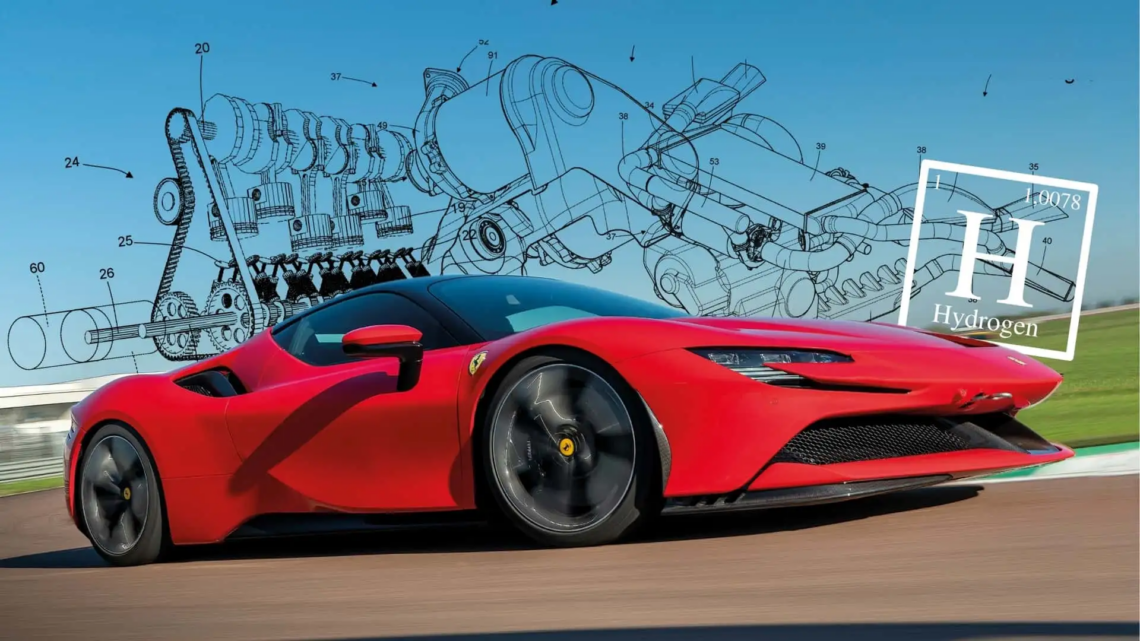Could This $6 AI Stock Make You 100X Richer?
Sponsored
Based on our research, we are at the starting point of the “Next Big Thing.” Bigger than 5G… electric cars… streaming media… and crypto. COMBINED. We're talking about a far BIGGER, $150 trillion opportunity. Folks like Bill Gates, Jeff Bezos, and Warren Buffett are singing the praises of Artificial Intelligence. And while everyone is talking about ChatGPT and NVIDIA… The real opportunity centers on an under-the-radar $6 AI Wonder Stock no one is talking about. We have reason to believe its share price could go ballistic in the coming days and weeks. Will it go up by 10… 25… even 50 times? Time will tell. Click here to get our No 1 AI investment recommendation of the decade.
P.S. Don't invest another dime in NVIDIA, Microsoft, Google, or any of the other big boys. This one has the potential to be 100x bigger than all those – COMBINED. Click here for the full story.
It appears the attention of the automotive world has been captured by this new patent by Ferrari for a hybrid car with an inverted internal combustion powerplant fed by hydrogen. While it might seem ridiculous, there are practical reasons for the unusual idea—and there's another piece of this patent that many are overlooking because of that unconventional engine positioning.
The main reason Ferrari seems convinced that an upside-down engine (burning hydrogen, no less) makes sense is because of the fuel tank arrangement it's proposing. There would be four tanks, all capable of holding more than 10,000 psi of hydrogen gas, with two spherical tanks flanking each side of the engine. The other two tanks are cylindrical and would sit on top of the engine, with the longer of the two forward of the rear wheels. This would require an inline block shape but doesn’t totally explain the upside-down placement. Oddly, Ferrari’s own patent doesn’t necessarily limit this idea to an inline-six, as shown, but it’s “preferred,” and the proposed car would be a hybrid with an electric motor driving the front wheels.
Why Don’t Upside-Down Engines Exist?
The main reason we don't see inverted engines in production cars is gravity. The limiting factor isn't fuel injection—these systems have enough pressure and a short enough duty cycle that gravity isn't an issue—but rather oiling. In a conventional wet-sump oiling system, you can count on gravity to help drain oil back down to the oil pan and the pump and circulate it where it needs to go. The crankshaft is also low in a conventional engine, so the oiling path isn't far from the pump.
The solution is a pressurized dry-sump oiling system, and Ferrari’s specific solution to its proposed I-6 is three pumps, one for pressurizing the feed side located on one side of the block and a pair of pumps for the recovery side positioned on the other side of the block. These pumps are connected to the engine via its camshafts, which draw and send oil to a recovery tank. All these ideas are just like a conventional dry-sump system. The fourth pump seen in the patent is for the coolant and driven by the camshafts.
One other issue in an inverted engine is that oil that isn't scavenged back into the sump can seep down into the cylinders, potentially causing a mechanically disastrous hydrolocking situation. Ferrari doesn’t fully explain how any remaining oil that the recovery pumps can’t pull back before the engine turns off doesn’t hydrolock it. It appears the patent designers expect that these pumps will pull enough out to prevent this longstanding issue for upside-down cylinders.
What Everyone Seems To Be Missing
The idea of an upside-down hydrogen engine is wild enough, but it doesn’t stop there. Within this patent are two very interesting ideas involving the transmission and the turbochargers. First, the transmission is a seven-speed dual-clutch gearbox, which aside from (also) being upside-down is rather conventional. What’s not conventional is that the dual-clutch assembly doesn’t attach to the engine; instead, the input shaft directly connects to the crankshaft.
The “why” of this design is that Ferrari intends to drive the twin centrifugal superchargers off the dual-clutch drum of the transmission. From what we read in the patent, positioning the superchargers there is the optimal path for the air and reduces pressure drops from the outlet to the intercooler. The superchargers would share a common shaft off the gearbox to drive them up to 100,000 rpm while the common shaft will spin up to 10,000 rpm. It could be possible that an electric motor could be attached to these superchargers for power generation, spooling, and possibly even boost control.
As if that wasn’t crazy enough, there is also an alternate proposal in the patent for a turbocharged version with divorced turbines and compressors—not separated with a motor in between, but literally separated with only an electrical connection joining the two. The turbines would have a generator attached to them, and this energy would be sent to a battery for storage and then used to drive the compressors attached to a single motor. Yes, you need to read that again: The compressors drive a generator that then sends electrical power to the motor to drive the compressors.
Whatever Ferrari Is Smoking…
To say this patent is mind-bending is a bit of an understatement. While it seems unlikely at a glance that this entire system might see the light of day in a production Ferrari, it's possible that some aspects might. The transmission and supercharger tie-up are possibly the most likely. As for the inverted engine idea, the issues with hydrolock might not be a huge deal, depending on how well the oil can be recovered by the dual recovery pumps, but that remains to be seen considering you can’t remove all the oil from the engine for a simple reason: You still need some oil for startup. That said, if Ferrari can figure that out and really goes through with this, we’re in for a rather wild engine from Maranello.
$11 Trillion Tech Windfall is Moments Away
Sponsored
I've been pounding the table about how a brand new “Miracle Material” is going to rock the entire market and create overnight millionaires… I've tried to let everyone know how this new tech will allow phones to charge in seconds… How cancer could soon be as curable as the common cold… And how we could even see an end to global water scarcity… All because of one unusual $11 trillion “Superconductor”. Thanks to a brand new tech breakthrough at the Georgia Institute of Technology… This futuristic reality – and the overnight millionaires that it will create – are coming at us faster than ever. Click here to see for yourself. When you click the link, you'll see exactly why this material will revolutionize just about every industry on Earth – almost overnight! And the crazy part? While most folks are losing their minds over AI, this new “Superconductor” has gone largely unnoticed… Which means folks who get in now will be among the few who stand to gain the most from one of the rarest and most lucrative opportunities to hit the market in recorded history. Click Here Now For The Full Details.






